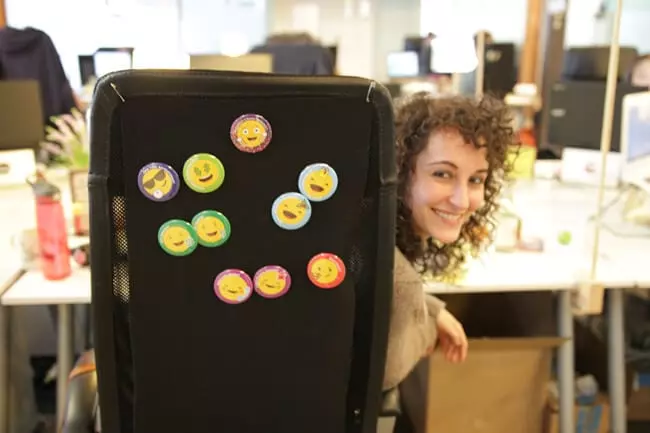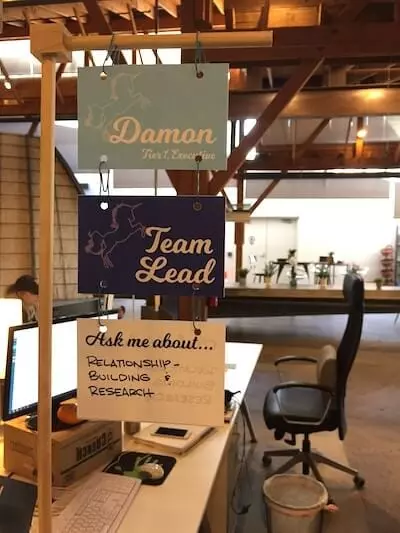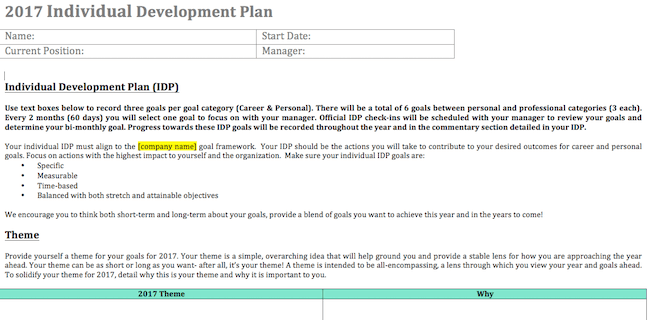If you’re like a lot of managers and leaders out there looking to motivate staff members, the following scenario should sound eerily familiar:
You finally have your dream team in place. You’ve hired selectively, waiting for just the right fit for each role. These are people with stellar backgrounds and proven track records of success. On paper, these individuals are poised to contribute to your culture and help take your department – and your business – to the next level.
To their credit, your team started strong. They came out the gate with fresh ideas and energy.
But lately… not so much.
These days your team seems to be fine going through the motions. That star performer who put up those crazy numbers in her first three months? She’s hit a plateau, and lately her work product has the telltales signs of complacency – sloppiness, surface-level analysis, and an overall lack of creativity.
The frustrating thing is you know how great they can be. You’ve seen them at their best, but for the moment, the spark seems to have gone out
What’s going on here?
Well, it’s good news / bad news time.
First, the bad news: your team lacks motivation.
The good news? This is an entirely fixable problem.
Before you decide to clean house (a terrible idea!), remember that there are proven ways you can reignite that spark you once saw in your team.
We’ve talked to employee motivation and engagement experts to narrow down the 23 best tips to motivate your people and elevate their performance to optimal levels once again.
We’ve also tried to focus on the how as well as the why, so you can turn these ideas into action at your company ASAP.
Let’s dive in and start motivating employees!
1. Recognize a Job Well Done
How will recognition motivate my employees? Managers and HR pros may be on the fence about incorporating recognition programs at their companies, but here’s why it’s a great idea.
Recognition creates an emotional connection between employer and employee – a critical piece of employee engagement – and fulfills employees’ basic needs of esteem and belonging within a group.
Our friends at Bonusly, an employee recognition software, suggest using spot bonuses as they’re a simple and effective way to recognize and reward positive behavior.
If you’re new to spot bonuses, it’s a type of “on the spot” bonus where you provide your employees with a reward to show them an appreciation for their hard work. Rewards can be cash, gift cards, or money toward their Lifestyle Spending Accounts.
Because these are given “on the spot,” it helps employees to easily identify what behavior is appreciated by the organization and motivates them to work harder and to build upon these values.
 As Charleston, South Carolina-based performance coach and employee engagement expert Liz Guthridge explains, recognition satisfies a fundamental need for all of us in the workplace:
As Charleston, South Carolina-based performance coach and employee engagement expert Liz Guthridge explains, recognition satisfies a fundamental need for all of us in the workplace:
“People crave recognition. Recognition serves a worthwhile purpose. Recognition confirms you’re doing the right thing and encourages you to keep doing it. Plus the act of giving and receiving recognition makes both the giver and receiver feel good, thanks to the hit of dopamine, the feel-good neurotransmitter.”
Failing to recognize people for their work is one of the biggest mistakes Guthridge sees in her work as a trainer and consultant.
Sarah Payne, Managing Editor at WorkHuman, offers her take:
“One of the best ways to motivate your people is through appreciation and recognition – the more frequent, the better. In our The Future of Work is Human Report, 79% of respondents told us recognition and rewards makes them work harder.”
The best part is – recognition is essentially free! It can in the form of a formalized program, or can be as simple as sending a thoughtful email (or better yet, a handwritten note) to your team members calling out their amazing work.
So the question shouldn’t be “why should I recognize my people?” but “why wouldn’t I recognize my people?”
Tony Aldridge, a top-performing sales manager and expert motivator here at SnackNation, dives deeper. He explains recognition needs to be personalized to the individual, “Some people like to have their name up in lights while others like a simple email. Remember that everyone likes their recognition in their own way and it is our job as leaders to understand that.”
Motivation is something that each of us experiences differently not all staff motivation ideas work for everyone. It’s important for managers to listen to their team and tailor techniques to fit each person.
Try this: Launch a monthly award program with Bonusly
- Have your company vote for the team member who displayed the best work ethic, grit, or attitude for the previous month. (Google Forms or SurveyMonkey make this incredibly easy.)
- Use this as an opportunity to reinforce your company’s core values by tying the award to the team member who embodies one more of them that month.
Reward the winner with a gift card, lunch with the boss, or creative trophy.
2. Take Your Culture Virtual
Whether or not your team is completely remote, it’s a pretty fair bet that a significant amount of collaboration happens virtually. It only makes sense that the culture and core values that define your organization should extend to the virtual realm as well.
While the concept of taking company culture virtual to support your modern workforce makes a lot of sense in theory, the logistics of how to actually accomplish that can be confusing. We recommend working with a partner like Fond. A unifying cultural hub that offers an accessible social recognition feed where employees can come to feel appreciated and more connected to one another.
One of the many things we love about Fond is that it allows program administrators to configure custom recognition occasions, which means you can encourage employees to recognize each other for culturally relevant accomplishments. Our favorite example is living up to company core values, but you can do whatever makes most sense for your company.
In addition, Fond allows you to customize your rewards catalogue and bundles rewards, peer-to-peer recognition, and a vast selection of exclusive corporate perks on a single platform that serves to reinforce your company culture virtually.
Try this: Use Fond to Host a Recognition Challenge
In addition to supporting ongoing peer-to-peer recognition, you can use Fond to facilitate one-time recognition challenges that bring your team together and drive up employee morale. Here’s how to do it:
-
- Set your recognition occasions. For a one-time recognition challenge, it can be fun to set a unique occasion that highlights a particular cultural element you want to work on strengthening. For example, maybe you want to work on improving collaboration. If that’s your goal, you might create a custom recognition occasion titled “Being a Team Player.” Whenever an employee sees a colleague living out this value, they can easily celebrate them for it through Fond.
- Outline goals. For your challenge to be effective, you need to clearly outline goals. Start by setting a timeline — will this challenge be running for a week? A month? A quarter? Once you’ve clarified that, challenge employees to deliver a certain number of recognitions, or max out their giving budget before time runs out. Keep in mind that the goals you outline should be focused on giving, not getting, recognition, as this is more effective for instilling a culture of gratitude at your organization.
- Pick your prizes. The program will be most effective if it’s incentivized — and all the better if you can make those incentives exclusive company offers that can only be earned through participation in the recognition challenge. Higher-end company swag (think branded AirPods) and out-of-the-office excursions (think wine tasting, courtesy of the company) are examples of options employees are sure to love.
- Ready, set, recognize! With these things in place, you can launch your challenge and let employees recognize away. By the end of the challenge, employees will be in the habit of recognizing one another. Even when the challenge has ended, the habit of recognition will carry on as a regular company practice that helps your culture thrive virtually.
3. Create Stretch Goals
Stretch goals are ones that are set just beyond your team’s (or team member’s) current capability.
Dangling these goals will motivate them to push beyond their perceived limitations and make major breakthroughs that will help your business.
One thing we all have in common – we want to be successful! Achieving small and major goals keeps us going and feeds our desire to contribute and have an impact. However, setting goals that are too big will put your team into overdrive which may lead them to feel overworked or burnt out.
Instead, focus on keeping constant and consistent stretch goals that motivate everyone but doesn’t culminate in a definite “end” that could be interpreted as a recovery or designated “slack-off” period.
We all have phases of intense work followed by maintenance. After all, we can’t perform at 110% 110% of the time. But giving your team permission to take their foot off the petal will create an even bigger problem when you want to ramp back up to a new initiative.
Try this: Shoot for 4% growth above your team’s limit
-
-
- Growth within this range is generally considered the sweet spot – big enough to inspire real progress, but attainable enough to avoid undue stress.
-
4. Break big goals into more manageable chunks

Even if everyone on your team can’t wait to tackle a massive new project, when the time comes to get to work, motivation can falter. This doesn’t mean employees don’t care about the project; it might just seem too aspirational—so big that employees can’t imagine completing it.
In his extensive research on productivity, Charles Duhigg, author of Smarter Faster Better and The Power of Habit, found that one of the most effective ways to successfully push progress is to divide work into a combination of big goals and S.M.A.R.T. goals. Remembering the big goals keeps your eyes on the finish line, and the S.M.A.R.T. goals light your way.
Consider S.M.A.R.T. goals the individual rungs on the ladder leading to your loftier goals. While S.M.A.R.T. goals are in fact smart, the name is first and foremost an acronym that tells you all the features your incremental goals should incorporate to get results.
- Specific
- Measurable
- Achievable
- Realistic
- Timeline
Try this: Have your team record and report on a list of S.M.A.R.T. goals
Come up with a list of tasks that will help you achieve your major goals. Then make the tasks into S.M.A.R.T. goals by running them through the checklist above. You’ve done the exercise correctly when you know exactly what you need to do to start working toward your big goals.
For example, let’s say your company makes workout gear from recycled materials. Your big goal is breaking into an untapped Australian fitness market. One of your smart goals could be completing a SWOT analysis for your target market.
- Specific: You’ll identify your company’s specific strengths, weaknesses, opportunities, and threats in terms of your target market.
- Measurable: Easy; you’ll measure success by whether or not you complete the analysis.
- Achievable: Absolutely; you have a five-person marketing team and an enterprise Nielsen license for market research.
- Realistic: Yes; just last year, your team completed a SWOT for a Canadian market.
- Timeline: You’ll allocate at least 2 hours per employee, per day for the project and set a deadline for one month from now. You’ll create a sense of urgency by letting employees know you would like to present the SWOT at the next board meeting.
5. Focus on the WHY
Let’s imagine the following situation:
A manager needs to get his team members to share an important company announcement on social media. Which approach do you think is most effective?
Approach #1: “Please share this blog post on your Facebook page. It’s really important.”
Approach #2: “Please share this blog post on your Facebook page. This announcement is a game changer for our business, and the more shares we get in the first few hours after the initial launch will have a significant impact on how many people we reach overall.”
I’m guessing you picked #2. But do you know why?
Because when you take the time to explain the reason behind your directions, you’ll get much higher buy-in from your employees.
Ingrid Catlin, Marketing Director at WorkStride, sees this all the time with the companies who use their employee engagement software.
“The number one challenge we see facing managers when they’re trying to motivate their employees is the fact that the managers have not adequately educated their employees on why they’re doing what they’re doing, only what needs to be done.
To be motivated, an employee needs to realize the impact of his/her day-to-day work and fully understand how it affects the business as a whole.”
This idea also connects beyond simple directives. It extends all the way to your company’s primary purpose. Having a strong Why behind your company’s mission will help motivate every action your team takes.
As Simon Sinek so famously pointed out, the what and the how are easy for most companies to identify. It’s the why that’s hard – and that makes all the difference.
Try this: Challenge your employees to identify the Why behind their most important tasks
-
-
- This exercise helps clarify the reasoning behind their day-to-day activities and helps separate essential tasks from non-essential ones.
- Make sure that they connect all of their tasks with the Big Why that underlies your company’s mission. This understanding will serve as a major motivator in the long run.
-
6. Focus on Intrinsic (NOT Extrinsic) Rewards
Sure money is important – we’ve all got to eat and pay the rent. But as a motivator, money definitely has its limits. Here is
A study conducted by Princeton economist Angus Deaton and psychologist Daniel Kahneman backs this up. They demonstrated that money doesn’t contribute to our overall happiness above $75,000. Income beyond this threshold doesn’t really impact our day-to-day contentment and therefore isn’t a great motivator. Here is where intrinsic motivation comes in to play.
Author and Menlo Innovations CEO Richard Sheridan has seen this play out throughout his career. Sheridan is the architect of one of the most inspiring company cultures we’ve run across, which he chronicles in his book Joy Inc. Here’s what he has to say about money as a motivator:
“The biggest mistake I see is when companies go right to extrinsic rewards to motivate … title, pay, stock options, incentives, office. We need look no further than Wells Fargo to see how badly this can turn out.”
Ok – so if extrinsic rewards don’t matter, what do?
Jenn Lim, the CEO and co-founder of Delivering Happiness offers an alternative:
“Intrinsic motivation that supports who that person is and what they believe in (e.g. purpose, values, autonomy, progress, relationships) is what matters not only most, but what makes the motivation last (i.e. sustainable happiness).”
For Sheridan, Lim, and others, it’s things like purpose and values that really move the needle over the long-term.
Try this: Rally around core values
-
-
- Create core values that express the essence of why your company exists – who does your business serve? What problems are you solving? What are the norms and behaviors that drive your team’s approach?
- Make these values highly visible, and ingrain them in your culture through quizzes, awards, and by practicing them.
-
7. Boost Team Spirit with Matching Swag
Why do athletic teams wear matching uniforms?
Maybe when this practice first started, it simply helped signal who was on which team, but over the years, matching uniforms have been ingrained in both fans’ and players’ sense of unity, identity, and cooperation.
When players match, they know they’re working together to achieve a common goal.
Make employees feel an even stronger sense of solidarity by giving out matching wearable swag. Looking like a team can make employees feel and act more like a team, enhancing their motivation to “win” at work.
Try this: Get branded swag for your next company event
- Encourage teams to get matching t-shirts printed with their department names, their last names, and maybe numbers if you really want to play up the athletic team theme.
- Before your next off-site retreat, charity day, or group outing, get everyone matching branded hats that will help tell the world you’re a team.
- Hand out branded sunglasses that will make employees feel team spirit whenever they put them on.
Get everyone matching baseball shirts and announce that you’re starting a company baseball or softball league.
8. Give Your Team Autonomy
How many times have you heard someone utter the phrase, “I really appreciate how my boss micromanages every aspect of my job.”
Unless you’re lying, I’m going to assume it’s … never.
Human beings value autonomy. We all want to feel in control of our time and energy, and a lack of agency is a surefire way to torpedo your team’s motivation.
Granting autonomy also demonstrates that you trust your team, which will go a long way towards forming the emotional bond between employer and employee that you see at highly engaged companies.
SnackNation’s winning leader, Tony, chimes in, “Autonomy is by far the most important motivator. Trust is the foundation of relationships, especially in business.
I let people own their work and ask for help rather than hold their hand the entire way. In my experience, this builds our relationship and allows them to feel like I am here to help instead of constantly pushing my own agenda.
In the long run, this builds more self-sufficient teams because they create their own process and I learn how to work with them and for them.”
But despite these benefits, autonomy is not the norm for most businesses. Managers fear that giving their direct reports too much leeway will create a lax environment and employees will take advantage. Cracking the proverbial whip is seen as a way to prevent slacking off.
Even when employers acknowledge the importance of autonomy, it’s still might difficult to get the balance right. Officevibe’s Director of Content Jacob Shriar, explains:
“The biggest mistake I see managers make when it comes to motivation is not giving employees enough autonomy. Employees often have what I call ‘quasi-autonomy’ where they don’t get to see a project completely through from end-to-end. This is a huge mistake.
When managers let their employees be their best selves and challenge themselves, they’re motivated, engaged, and excited.”
The key is giving your team a true sense of ownership – not just over their most important projects, but on things like schedule and time off. The ability to exert control over their time can be as motivating as the satisfaction that comes with seeing a project through to completion. An excellent tip on how to keep employees motivated and take complete ownership of their work.
Try this: Let employees set their own hours
-
-
- This is a simple way to show that you trust your employees to get their work done without a higher up constantly looking over their shoulder.
- If you focus on outcomes rather than rules, you’ll be surprised how motivated your employees will be to rise to the challenge.
-
9. Figure Out What Makes Your Employees Tick
One thing we can virtually guarantee: your employees are all very different.
Some are introverts, some are extroverts. Some are adventurous and are energized by the unknown, others prefer the security of the familiar. Some might require extra guidance, others are much more independent workers.
Some are probably fresh out of college. Others might be putting their kids through college.
The point is, your employees have different backgrounds, are at different stages in their lives, and are motivated by very different things. One of the biggest mistakes you can make is trying to force a one-size fits all solution on your diverse workforce.
TaskUs president and co-founder Jaspar Weir concurs.
“The biggest mistake we see is that one size does not fit all when it comes to management. Some people need more supervision and instruction, others need more independence and trust. A manager’s job is to assess and adapt to each individual.”
So how do you assess and adapt? Simple. By listening. Zoomshift co-founder Jon Hainstock advocates frequent check-ins.
“The best way to motivate your employees is to figure out what makes them tick and align their personal and professional goals with their role in your company as best you can. To do this, you need to check in with each employee frequently and ask them questions about how things are going.
The goal of these check-ins is to understand what they are feeling, and more importantly, why they are feeling that way. Taking time to listen to your employees will increase trust and give you insight into how you can make things better at your organization.”
Try this: Make time to get to know your employees on a personal level
-
-
- Set aside 30 minutes to get to know each person on your team on a personal level.
- Don’t just ask about career goals, but find out what motivates them outside of work.
- Questions you can ask:
- What’s the greatest lesson you’ve learned from your parents?
- Who was your childhood hero? Best friend?
- Who is someone from your past that you haven’t spoken to in over six months? What’s stopping you from reaching out to them?
- What gets you out of bed in the morning?
-
10. Gamify Your Most Important Tasks
Want a proven motivator for everyone, no matter who it is? Looking for team motivation ideas that work? Try turning work into a game.
One way to inject some competition into the workplace is through gamification – i.e., introducing elements of gameplay to your team’s most important tasks.
One of the coolest examples we’ve ever seen is actually here at SnackNation.
Recently, SnackNation Member Success Team (MST) leads Chelsie Lee, Brendan Hannigan, and Clay Telfer unveiled a game-based Achievement and Rewards program that has the whole office buzzing.
Think of a real-life video game, where team members unlock badges for hitting milestones. Except, instead of digital badges for your gaming profile, these badges are actual buttons that Chelsie designed herself and that Clay punched using an actual button maker.
As Clay describes it, the program has three facets:
-
-
- Medals for participating in monthly team-wide campaigns.
- Badges that individual MST reps unlock for hitting certain milestones – like lifetime upsell, number of member issues resolved or total number of calls fielded.
- Monthly trophies awarded for outstanding performances, like delivering the best “wow” moment to SnackNation members.
-

Part of the reason the program is so successful is that Chelsie, Brendan, and Clay put their own personal touches on it, designing and making their own custom buttons and awarding them in an elaborate ceremony.
Chelsie, who happens to be an amazing woodworker, actually built wooden poles that display each MST rep’s name and their area of expertise (as voted on by the team).

Try this: Launch your own achievement program and reward with swag!
-
-
- This real-life gamification definitely has the “wow” factor, but we understand if you don’t quite have the bandwidth. Luckily, you can launch a virtual awards program via gamification platforms like Assembly – which is completely free!
-
11. Create an Awe-Inspiring Work Environment
Motivation and mood go hand in hand. That’s because your mood affects your energy, ability to concentrate, and overall sense of wellbeing.
If your looking for employee motivation ideas that work, then you might want to invest in your work environment.

According to a study from Ohio State University and the National Institute of Mental Health, your work environment seriously impacts your mood.
In the study, workers in older buildings with low ceilings and loud air conditioners were more stressed than those in newer buildings with things like more natural light and open layouts.
So it makes sense to invest in a work environment where people actually want to spend their time. (Crazy, we know.) That’s why so many offices are starting to resemble homes, and why the kitchen is becoming the center of office life.
Creating a homey atmosphere will motivate your company, minimize distractions, and have your team members looking forward to coming to work each day.
Try this: Make your own furniture
12. Champion Friendly Competition

Emphasis is on the friendly here. Competition can be a great motivator but if you let it get out of hand, conflict will rise as you see morale and teamwork deteriorate.
If you decide to engage your team in some competition make sure it stays in the realm of fun and not cutthroat.
The challenge is not to get your top performers to perform better, it is also to train them to pull up everyone around them and build a well-oiled machine.
Here are some helpful tips to keep in mind:
- Plan your competition around a specific business goal
- Reward teams, not individuals
- Have a system of checks and balances
Stepha Cook, one of our star sales managers and respected leaders here at SnackNation, explains:
“The trick to keeping work competition friendly is to promote fair play. Although individual successes can be hugely rewarding, often team wins can have an even bigger impact. It’s important to find the right balance when incentivizing your team – a mix of individual and group goals along with clear rules that promote collaboration over sabotage are essential to long-term success.”
Try this: Host a case competition for a business challenge
-
-
- This is a great way to encourage innovation and support new ideas and will help teams bond over growth opportunities.
- Harvard Business Review outlines 4 rules to maximize results.
-
13. Don’t Pit Employees Against One Another
As we’ve already seen, friendly competition can be a good motivator for your team. Things start to go awry when that competitive spirit morphs into a cutthroat culture of self-interest.
To prevent employees from merely “looking out for number one,” make sure that you’re not incentivizing moral hazard.
Here’s MenloInnovation’s Richard Sheridan again with an example:
“The second biggest mistake [I see] is forced ranking systems and then cutting the bottom 10%. Any system that pits the performance of the individual against the rest of the team is bound to fail, and sometimes spectacularly.”
Try this: Celebrate successes as a team
-
-
- Rather than just focusing on one or two individuals who drive outcomes, focus on the support roles that others play to enable those stellar performances.
- Check out how we share each other’s success as a team at SnackNation
-
14. Lead with Vision
Employees need to know that all their efforts are driving towards something. They need to know that there’s a destination in sight. That’s where vision comes in.
Shane Metcalf, VP of Customer Success at 15Five, reminds us why it’s important not skimp on vision.
“Without a compelling vision that inspires everyone to rise up and make it happen, you can try every engagement trick in the book and you will only have short term boosts followed by crashes in morale. With vision at the helm though, you create an intrinsic aspiration that taps into the human desire to realize individual and collective greatness.“
Sara Pollock, Director of Marketing at Clear Company, helps breaks this down further.
“Employee motivation and engagement is driven by a clearly communicated mission and vision. Without transparent goals that demonstrate to your people how their work contributes to company objectives, you will find it difficult to truly engage your workforce.
In fact, when companies engage top talent around company mission, their employees are 400% more effective.”
Try this: Create a company vision board.
-
-
- Make a visual reminder of your company’s roadmap. Cut out words, phrases, and images that express the destination you have in sight for the business. What’s your BHAG? Where do you see the company in five years?
- Encourage team members to add to it. Their participation in this process will give them a sense of ownership and help ingrain the vision into their daily activities.
-
15. Remember the Golden Rule
Employers sometimes forget that we don’t operate by a completely new set of rules just because we’re at the office. In fact, the lessons we learned as kids are just as relevant now as when we first learned them on the playground. Shawn Murphy – CEO of Switch+Shift and author of The Optimistic Workplace – explains:
“Too often I hear managers say they shouldn’t have to focus on motivating their people. It’s their job to do their best. Really?! Since when did kindness, thoughtfulness, and being human stop having relevance in the workplace?”
Likewise, Rieva Lesonsky, the CEO, President, and Founder at GrowBiz Media, reminds us that we’d all do well to remember that most of us were once employees too.
“If you want motivated employees—remember the Golden Rule,” she says. “Most managers/bosses were once employees. Remember all the things your boss did that drove you crazy/enraged you/made you quit? Don’t do them.”
Try this: Think about the best and worst bosses you’ve ever had
-
-
- Identify your least favorite manager throughout your career. Now make a list of everything that rubbed you the wrong way about him.
- Now think of your favorite boss. What was it that made her so inspiring? Write it down.
- Now go over those lists and look for traits or behaviors that you recognize in yourself. Develop a strategy to avoid the negative behaviors and do more of the positive ones.
- Note – this exercise takes some serious self-awareness. We recommend working on it with a peer – someone who knows your managing style but isn’t a direct report (so they can be honest with you).
-
16. Give Your Employees Ownership in the Company
We’re not just talking about autonomy this time… we mean a real stake in the company. Make employees shareholders.
When employees feel like they are just trading their time for a wage or salary, the relationship starts to feel transactional. They’ll feel much less obliged to spend their discretionary time at work – they might think, “why should I kill myself working late just to make some shareholder’s stock go up a quarter of a point?”
On the flipside, when employees feel a tangible sense of ownership of the business, they’ll care that much more about its success, and be much more willing to go above and beyond the call of duty.
Try this: Propose an Employee Stock Option Programs (ESOP)
-
-
- Yes, this won’t happen overnight. You’ll need significant buy-in from your company’s leadership to make this happen, but there are real benefits to letting your employees share in the success of the business.
- Here’s a guide to help you understand what’s involved.
-
17. Offer a Clear Path for Advancement
Nothing saps an employee’s motivation like the feeling that she’s stuck in a dead-end job.
Solve this by delineating a path forward in your employee’s career with a learning and development program… even if it’s not at your company!
Some employers have a tough time committing to a growth plan that sees employees leaving their ranks. But in today’s economy, it’s essential to value “graduation” over retention.
That’s because the growth of your business depends on the growth of the individuals at your company, so it’s inevitable that people will grow out of their roles.
Sometimes this means they move on to different companies. If that happens, don’t get sad… it just means everything is working as it should.
Try this: Implement Individual Development Plans (IDPs)
-
-
- Have team members identify three personal and three professional goals. Make sure they include both short and long term targets.
- Next identify their current skill sets and compare them with the skills that these goals might require. Are there any specific professional or leadership skills that they can work on as part of their plan?
- Meet on a monthly basis to hold them accountable.
- Here’s a template of the IDP that we use at SnackNation
-
18. Introduce novelty

When your team can’t find the motivation to complete even basic, familiar tasks, adding more work to employees’ plates by taking on a new project is probably the last strategy you would consider. However, switching gears could be the solution to your team’s motivational rut thanks to neuroplasticity, your brain’s ability to change.
Your brain is pretty good at changing, and it actually likes change. When you give it a novel task or problem, it gleefully rises to the challenge. If fact, research suggests that to your brain, change feels like a welcomed break. When you switch gears, your brain becomes invigorated by all the new information it gets to take in and challenges it gets to tackle.
Try this: Give your team something fresh and exciting to work on
Present your team with a new project that is challenging and also completely different from the work that has gone stale. See what happens. By the time the new project is finished, the old project might have returned to a “novelty” state. Pull the switch again, and your employees might dive right into the old project with new gusto.
19. Change locations
As we learned in the tip above, our brains get excited by new things, including new locations and surroundings. One psychologist, Marvin Zuckerman, Ph.D., connected the love and desire for exploration to humanity’s earliest history:
“Homo sapiens were the only group of early hominids to emigrate over the entire world, which entailed great risk, so I think humans as a species are characterized by novelty, and intensity-seeking.”
When we go to new places, everything about our lives seems new, including our creativity and passion for work. On a company retreat, your employees might be able to rekindle the motivation they thought they’d lost forever.
Try this: Plan a retreat to reset your team’s creativity
Plan a retreat that takes employees far from the office and far from real life. If you work in an urban environment, then take the team out to the country to see green hills and blue skies. If your office is off the beaten path, then book a conference room in a swanky urbanite high-rise.
Plan an itinerary that mixes creative brainstorming with practical strategies. When your team gets excited about ideas generated during a free-form brainstorm, up the ante by challenging everyone to come up with ways to apply their innovative ideas to an existing company project.
20. Express Gratitude
First thing’s first – though similar, gratitude is different than recognition.
While recognition is about acknowledging specific individuals and their work product, gratitude extends much further. It involves being thankful for what we have in life – things like health, family, even challenges – rather than bemoaning the things we don’t.
Gratitude has been proven to elevate mood by releasing dopamine and serotonin, two of the brain’s feel-good chemicals.

Gratitude also improves brain function. When we’re stressed, we activate our brain’s “fight or flight” response in the limbic system. This stunts activity in the prefrontal cortex, which is responsible for cognition, decision making, and creativity.
Expressing gratitude has the effect of creating a calm, safe environment in the brain, which enables your prefrontal cortex to operate at a much higher capacity.
Better mood and better functioning brains = a more motivated team.
Try this: Make gratitude a company-wide practice
-
-
- At SnackNation we meet as a team every Friday to recognize one person who “Crushed-it” and to express gratitude for one thing in our lives.
- It’s an incredibly simple practice but it’s a cornerstone of our culture and sets a positive tone for the weekend.
- Handwritten notes are another great way to express gratitude. Our CEO often writes a hand-written note to team members on their birthday, expressing why he is grateful for them being part of the SnackNation team.
- At SnackNation we meet as a team every Friday to recognize one person who “Crushed-it” and to express gratitude for one thing in our lives.
-
21. Practice Transparency
A lack of transparency can erode the trust and credibility that you’ve worked so hard to maintain at your company. Get ahead of this by enacting a policy of radical transparency.
The last thing you want is for your employees to misinterpret your fear of leaking critical info with a lack of trust. Plus, leaving your employees in the dark creates a space for them to think the worst.
At SnackNation, we share all important business metrics with the entire team on a monthly basis. This helps remind everyone of our goals, where we are in relation to them, and what we need to do to get there.

Is there risk involved in this strategy? Absolutely. But the trust and engagement benefits far outweigh the potential risk of leaking numbers that you don’t want to get out there.
And a funny thing happens when you expect the best out of people – more often than not, they rise to meet that expectation!
Try this: Share your numbers internally – even the ones that scare you.
-
-
- We know that certain figures – like revenue or losses – should stay within the walls of your company, but that’s no reason to keep them from your own team.
- Resist the urge to sugarcoat or spin bad numbers. Your team will benefit more from a realistic appraisal than a fictional one. Plus, they’ll likely see right through it.
-
22. Get in the Habit of Self-praise

There is a lot of talk about self-love right now but it’s all for good reason. People who hold themselves in high esteem tend to be more optimistic about the future.
We all know those people who radiate positivity and good vibes. They are great to be around because they share their happiness and reinforce feelings of purpose and fulfillment. The opposite is also true, negative people can make us feel pessimistic and negative.
As a team motivator, you can have a lot of influence on your colleagues. Make sure that you give off feel-good vibes by practicing self-praise.
Don’t forget to apply your motivation tricks to yourself too. It’s important to make sure that you are recognizing your achievements.
Try this: Start your day by recognizing a personal accomplishment.
-
-
- Reflect on your work from the previous day and recall a small success. You will start your day on a positive note and your team will share your sense of achievement and confidence.
-
23. Celebrate Wins

The “play hard” of “work hard, play hard” doesn’t have to stop at your office door. Gratitude and appreciation can go far, but don’t forget to take the moment to celebrate your success. Nothing gets people amped up like a party. You don’t have to go all out with a venue, DJ and catering. Celebrations as small as a team lunch, Friday happy hour or even a coffee pow wow can mark a job well done.
Not only will it motivate your team to reach goals and engage in challenging initiatives, it will help keep the positive vibes rolling into the next project. Gathering with friends and colleagues is deeply fulfilling and is sure to keep your team’s motivation buzzing.
Try this: Celebrate monthly wins with a breakfast social
-
-
- At the end of each month, encourage your team to think of all of their collective wins. Invite them to share at a breakfast social.
-
Conclusion
While there’s no one-size-fits-all way on how to motivate your employees, take some of the ideas mentioned here and see how they can benefit your organization.
How do you keep your team motivated? What have you seen work? What’s failed?
Let us know in the comments below.
This article originally appeared on SnackNation.









